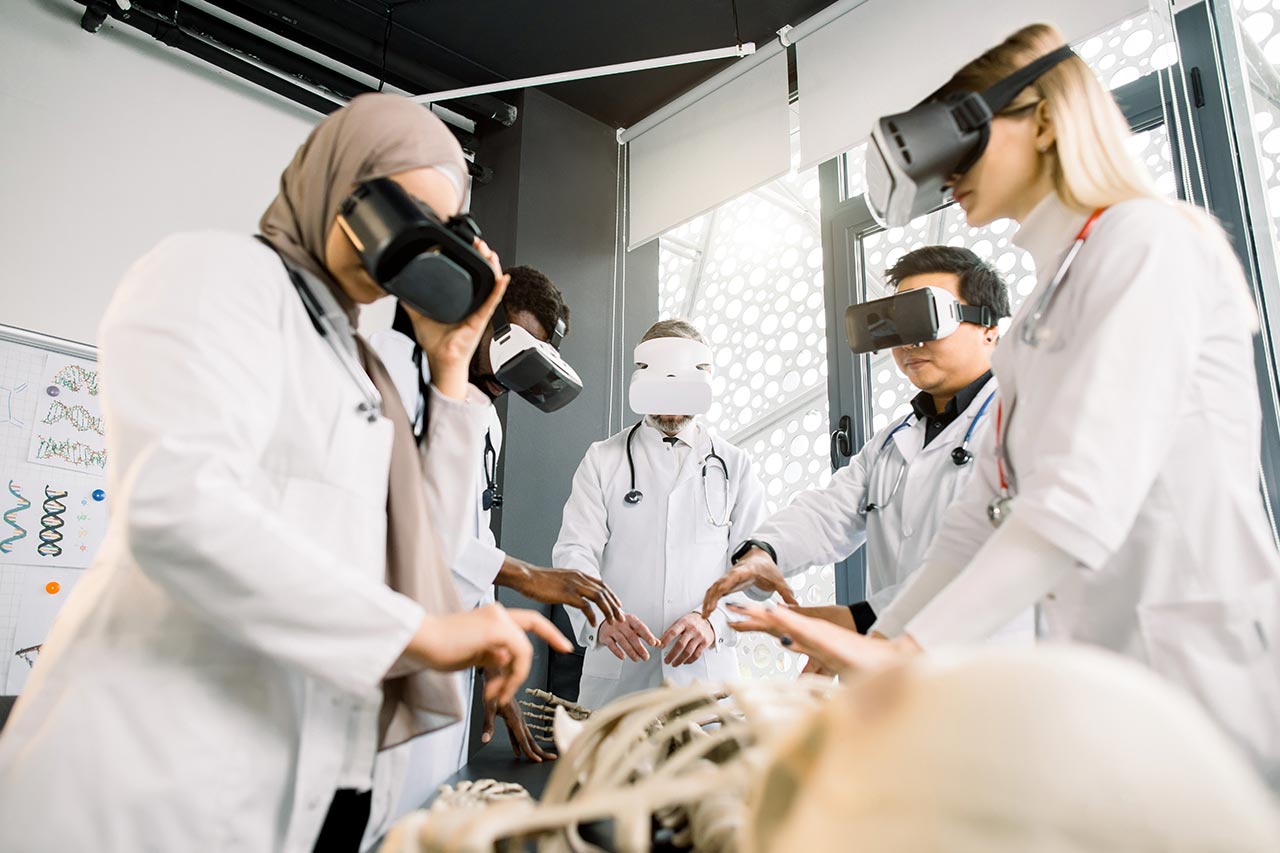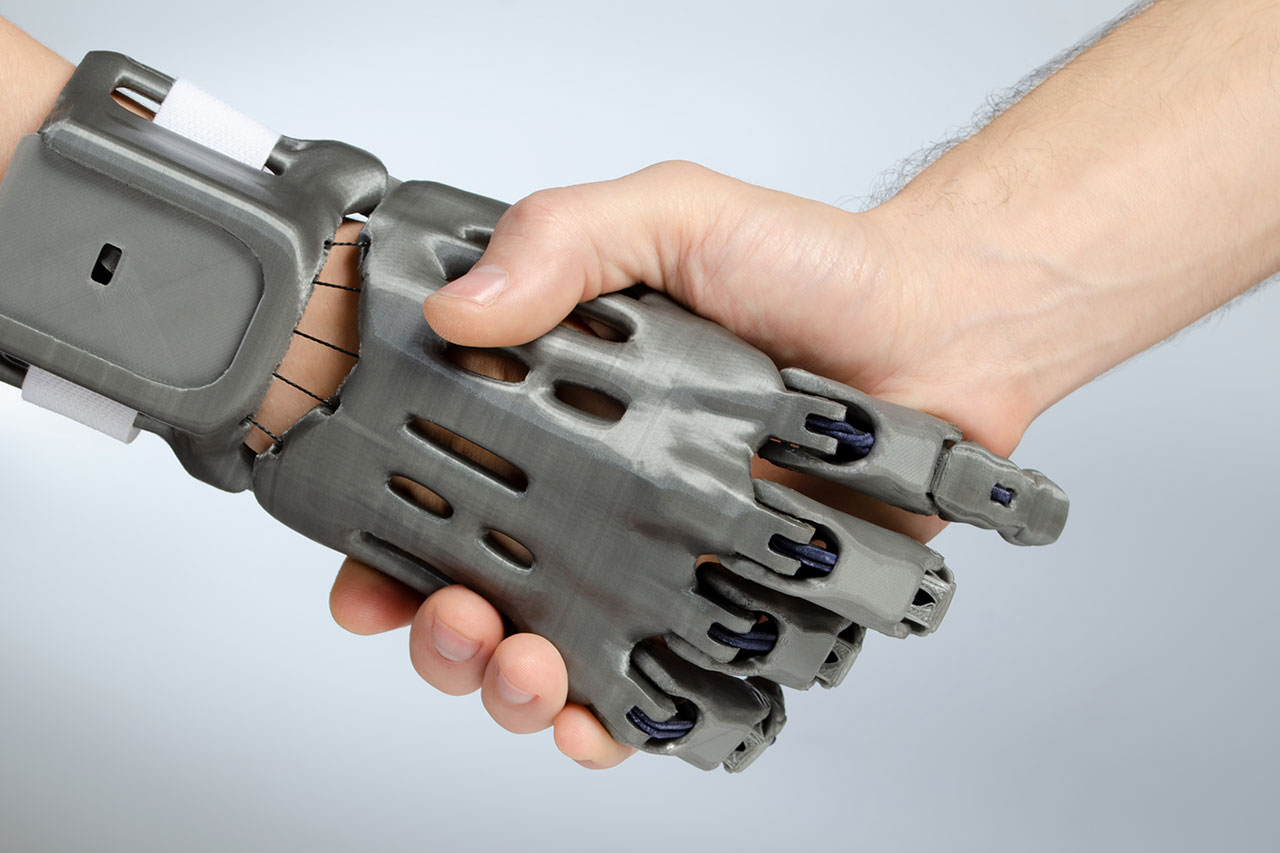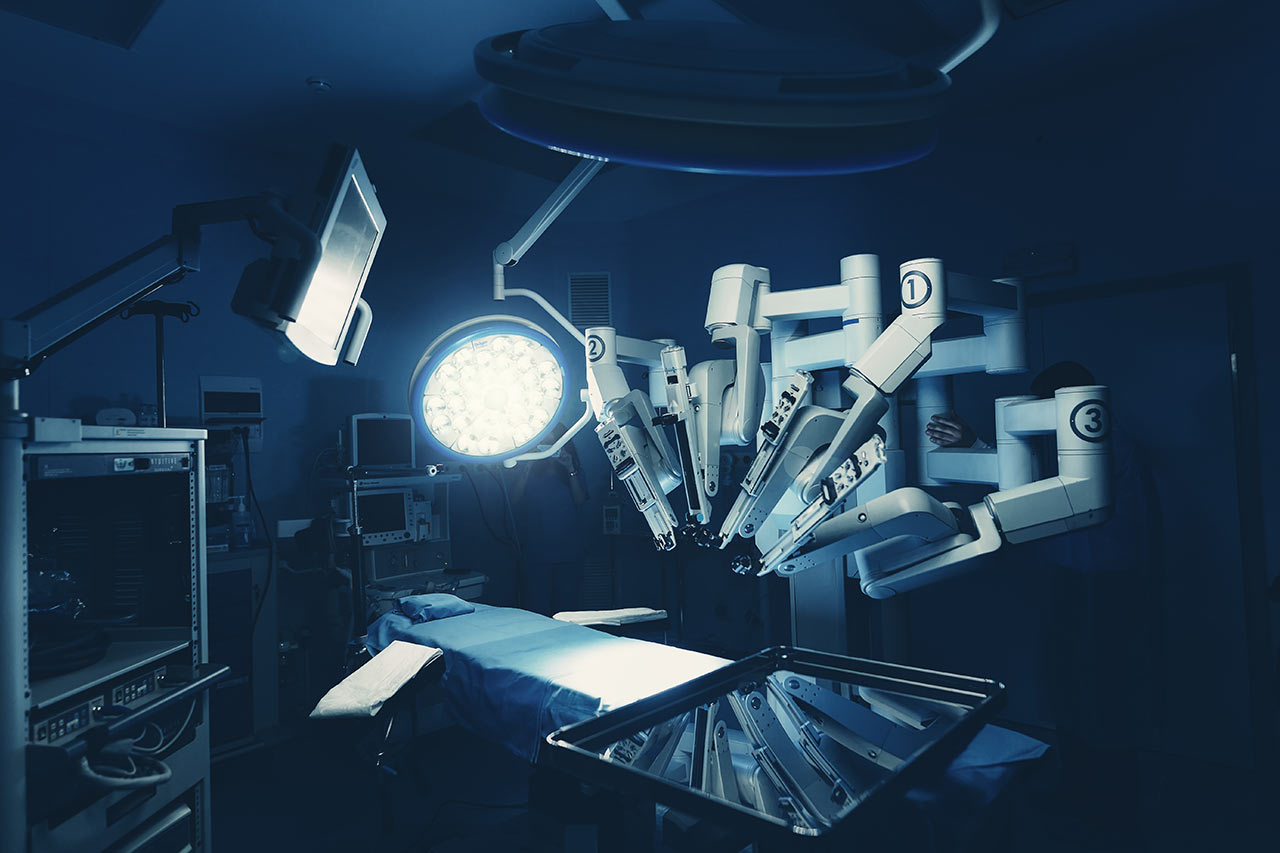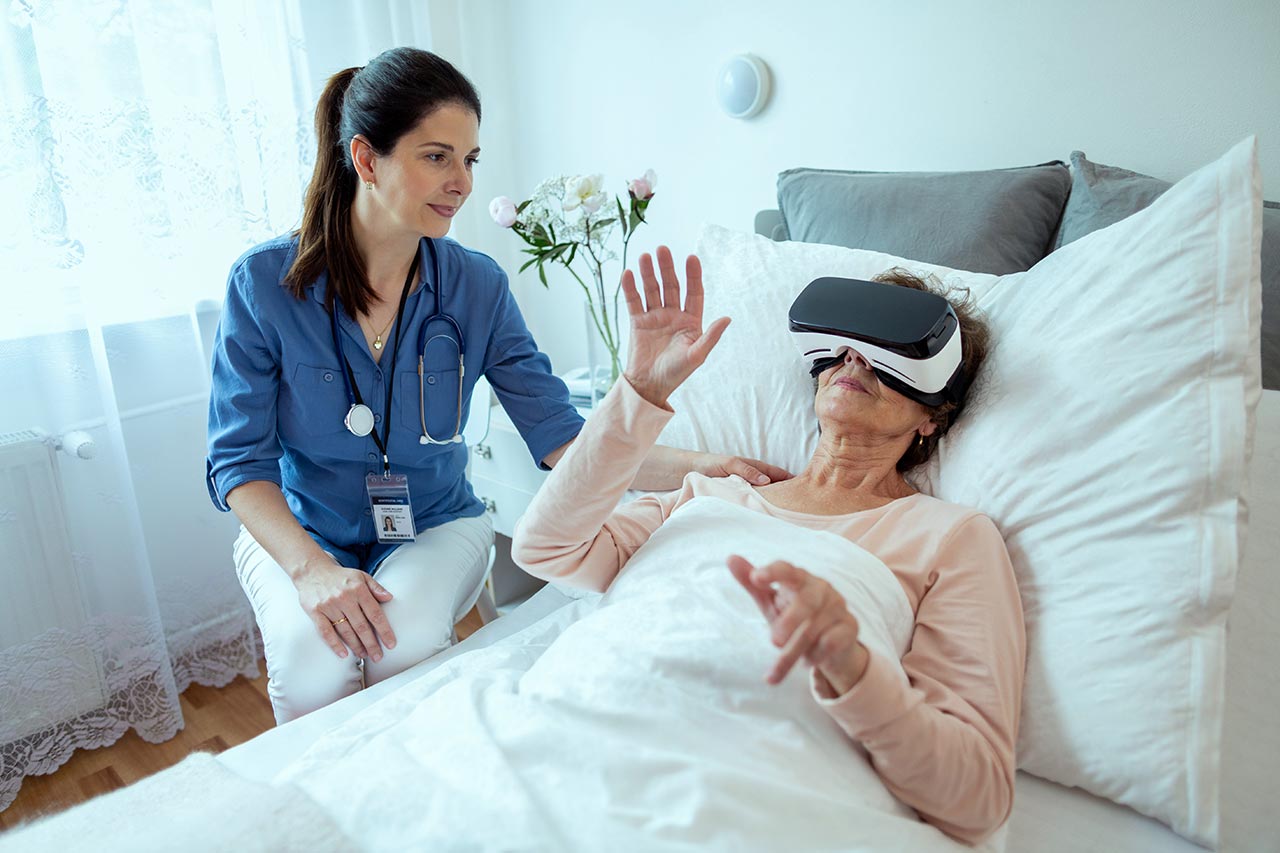Whether it is robotics or virtual, mixed or augmented reality, new technologies in orthopedics are increasingly present in the operating room for orthopedic surgery. Their interests are multiple, and the perspectives of development and value creation, both for health professionals and patients, are vast. Alcimed reviews 3 possible applications of technological innovations in the field of orthopedics and orthopedic surgery.
Virtual and mixed reality for the learning and training of doctors in orthopedics
Originally, virtual reality in health was developed for educational purposes, for example by allowing a 3D reconstruction of the human body, to study in detail the different components and mechanisms of the body. This technology allows, for example, reconstruction by organ, and access to high quality educational information.
The development of virtual reality is revolutionizing surgical training methods: little by little, traditional methods such as teaching in the operating room or cadaver labs are being abandoned in favor of virtual reality, which provides a better viewpoint and a better understanding of the manipulations to be performed. This trend has become even more pronounced since the Covid-19 crisis, during which virtual reality has made it easier to train future surgeons.
Mixed reality, on the other hand, allows access to an immersive tutorial during an operation, to ensure that the correct actions are repeated. For example, in 2017, the Montpellier University Hospital was the site of a world first: a neurosurgery intern performed an open spine operation, via an immersive tutorial, wearing mixed reality glasses.
Robotics and augmented mixed reality for greater precision in the orthopedic surgery operating room
By introducing robotics, as well as augmented and virtual reality in the operating room, it is possible to significantly reduce variability during operations, to guarantee better results for patients.
The presence of robotics in the operating room is not new: as early as 2001, Jacques Marescaux performed a gallbladder operation from New York on a patient in Strasbourg. This practice has been developed and extended to orthopedics: the main manufacturers in this sector have in turn developed operating robots, including Stryker, Medtronic and Johnson & Johnson.
The use of mixed reality in the operating room for orthopedic surgery, allowing the surgeon to be faster and more precise, is more recent. It was notably Prof. Thomas Gregory, in 2017, who demonstrated the interest of this technology in the operating room for orthopedics. Indeed, he operated on a shoulder prosthesis, assisted by mixed reality glasses, projecting a digital model on the patient, and gathering all the information collected during imaging examinations. The information available included, for example, the exact thickness of the tissue, or the precise location of surrounding organs invisible to the naked eye.
The advent of 5G is expected to accelerate the development of these technologies, for even greater accuracy, repeatability and safety for the patient.
Learn more about the integration of robotics in healthcare >
Virtual reality, sensors and 3D printing for a better follow-up of the patient throughout his journey
If virtual reality can already be used to treat certain phobias, or even to help with rehabilitation thanks to mirror neurons, for example, the application of this technology combined with sensors and 3D printing could improve patient care throughout the course of their treatment, from diagnosis to post-operation follow-up.
Before the orthopedic operation and as a preventive measure, sensors could be used to monitor the patient’s physical data. For example, we could imagine a custom-made corset, which integrates sensors to follow in real time the evolution of the curvature of the back, as well as the use of post-operative implants capable of detecting possible complications.
Virtual reality technologies can also be used to plan and simulate the operation to be performed in a virtual environment, allowing the patient to experiment with several procedures in order to select the most appropriate one.
Robotics or virtual reality, whether mixed or augmented, offer numerous perspectives in the field of orthopedics. Whether it is to complete medical training, to improve precision and repeatability in orthopedic surgery in the operating room, or to ensure optimal patient follow-up, these technologies should continue to develop in the years to come. At Alcimed, we look forward to studying in more detail these technologies that are revolutionizing the orthopedics of tomorrow!
About the authors,
Emile, Business Development Manager and Fanny, Consultant in Alcimed’s Healthcare team in France
Do you have an exploration project?
Our explorers are ready to discuss it with you
Contact our explorers >



